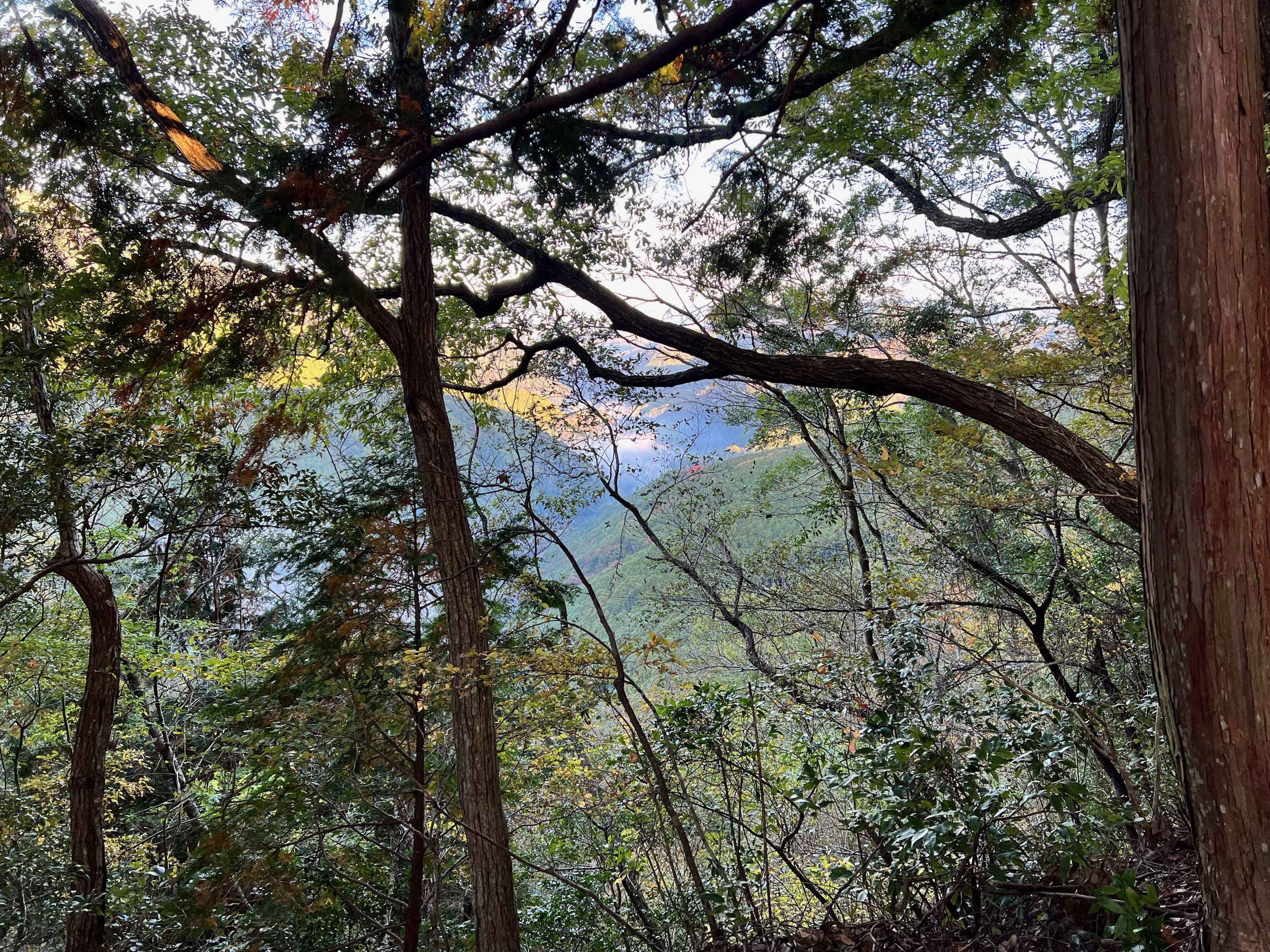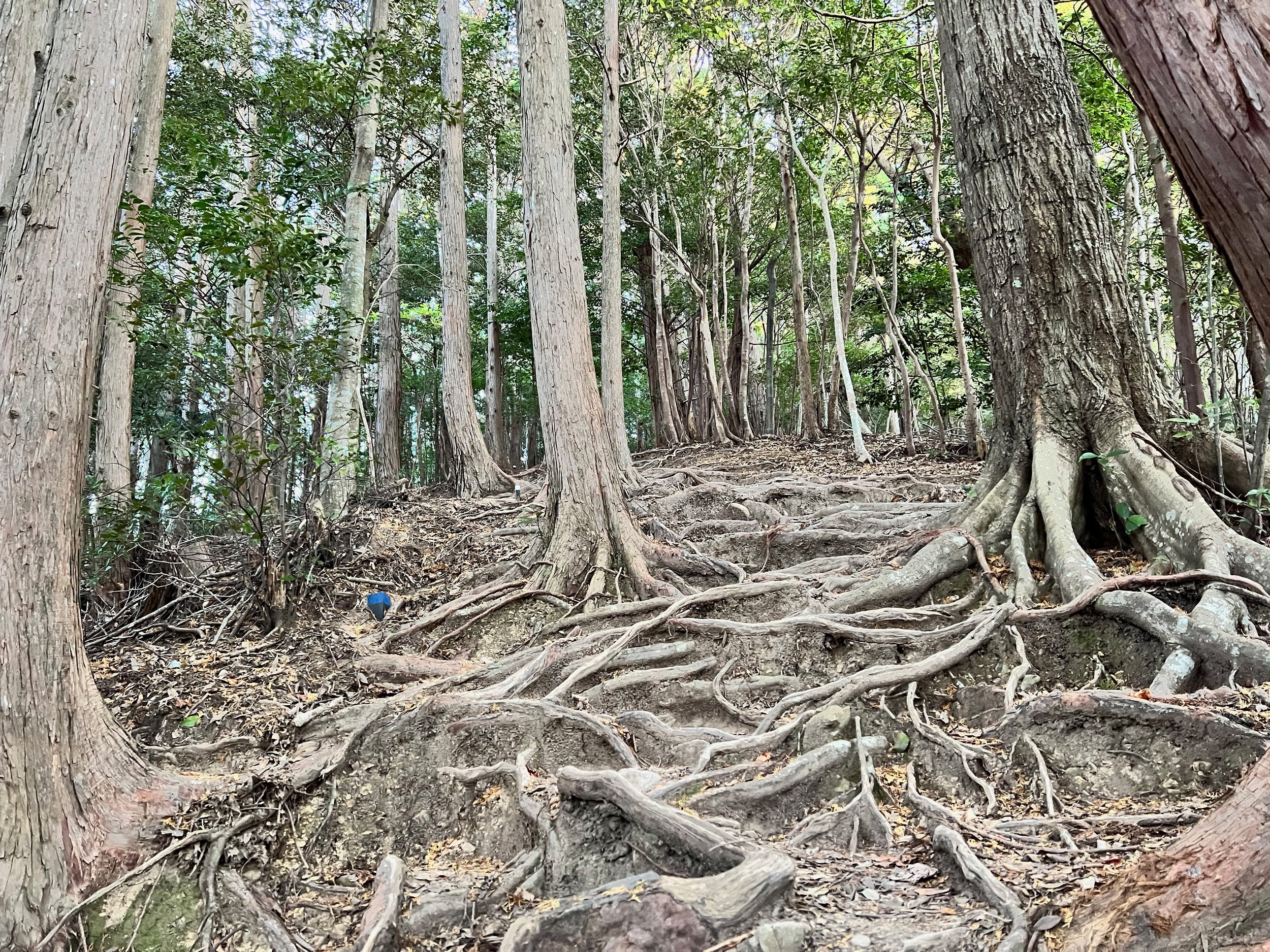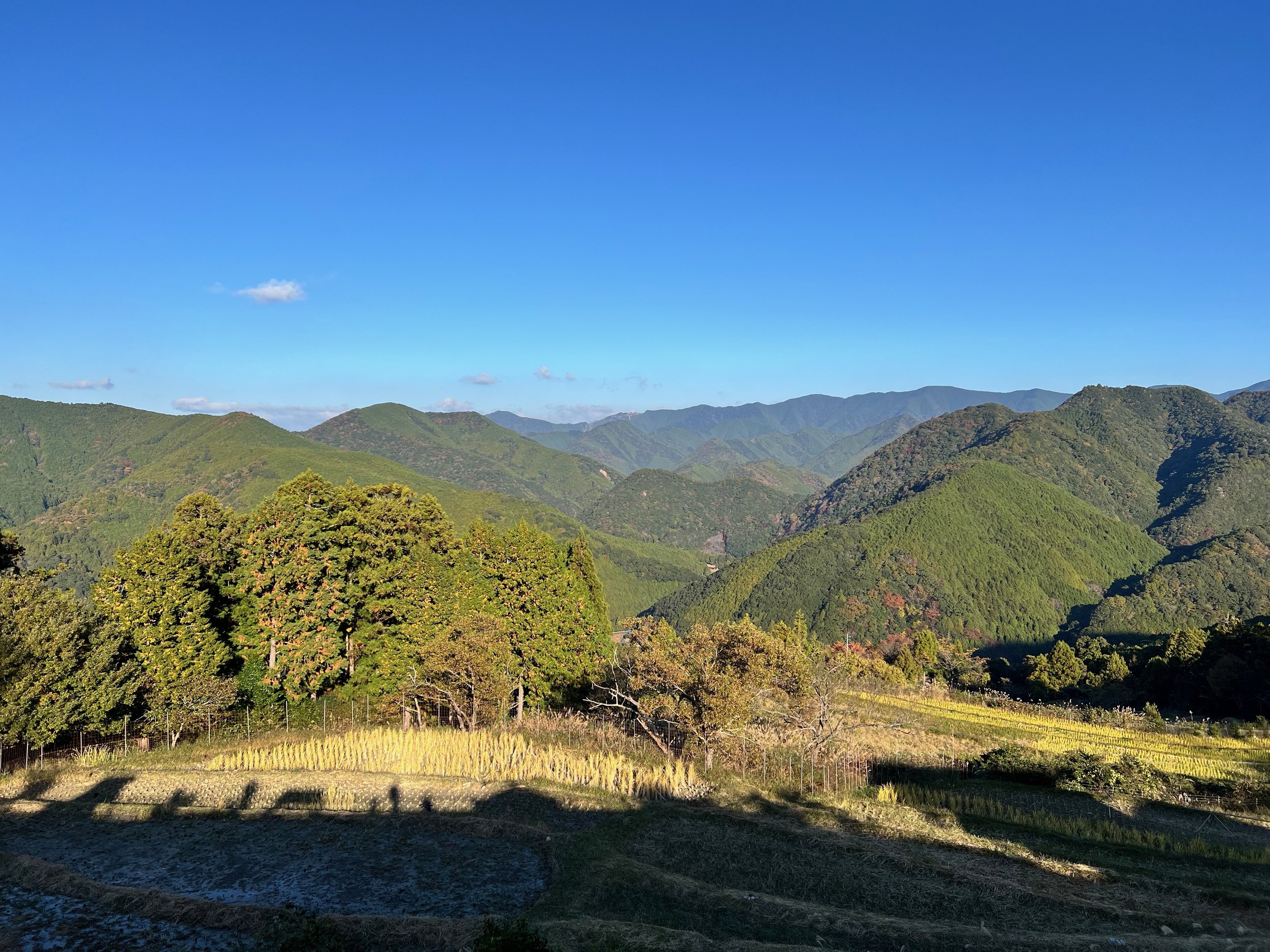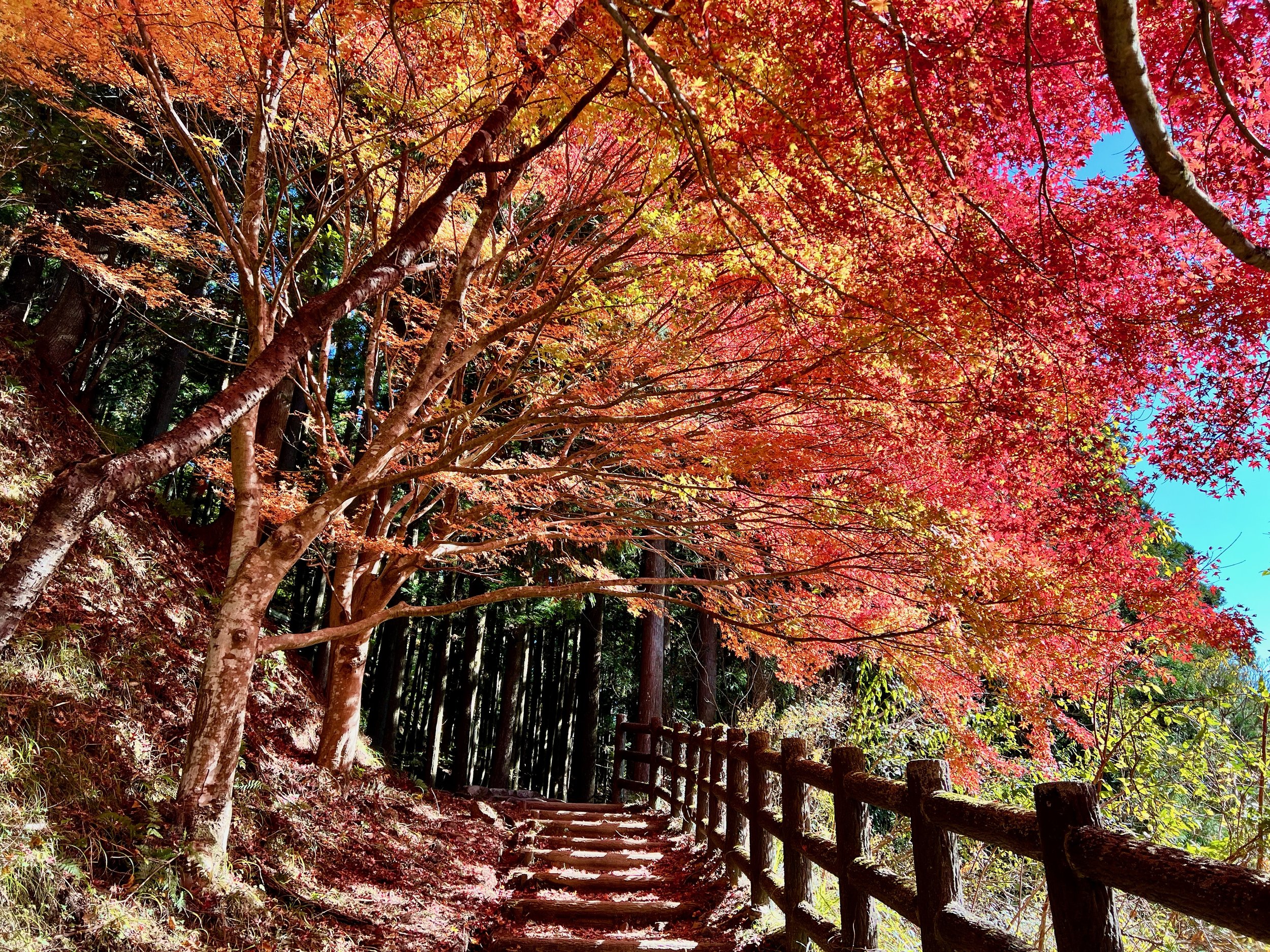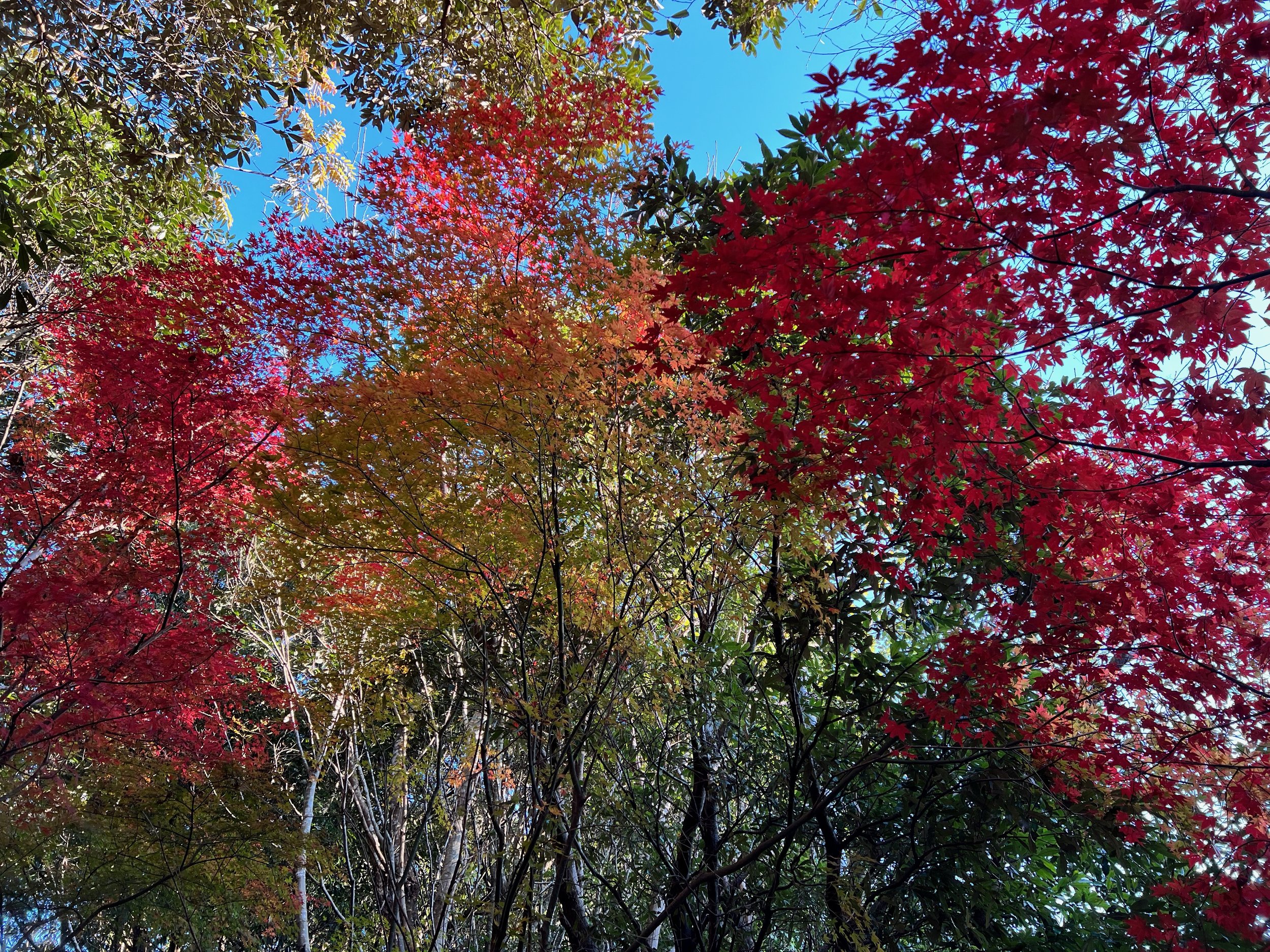Kumano Kodo Nakahechi – Day 1: Takijiri-oji to Chikatsuyu-oji
I arrived in Kii-Tanabe the day before my hike and stopped by the Tourist Information Centre next door to the station. The staff there were incredibly helpful—they gave me my credential, route map, and a physical bus schedule, highlighted the sections I’d need, and explained the best way to reach Takijiri-oji, the gateway to the sacred Kumano mountains. Although Google Maps shows fairly accurate bus times, having a printed timetable is always good to have.
The following day, I caught the first bus from Kii-Tanabe Station to Takijiri-oji. It was still early, so the information centre at the trailhead was closed. Although several hikers got off at the same stop, I seemed to be the only one heading straight toward the trailhead to begin the Nakahechi Route, the same path that pilgrims have followed for centuries.
I pulled out my brand-new credential and stamped it for the first time, offered a quick prayer at the shrine, and began the hike from behind it. The trail started with a steep climb to around 400 metres through tangled tree roots and dense forest. Along the way, I passed a large rock with a small hole that women traditionally squeeze through while praying for a safe delivery. I decided to skip it—unsure I’d fit—but paused to take a few photos before continuing around.
After that initial climb, the trail eased up until a short, steep ascent just before Takahara. At the rest house there, I saw many hikers just starting their day. I took a quick break, used the facilities, and continued on.
The next stretch to Chikatsuyu was more mountainous. A sign warned it would take about four hours with no residents along the way. It began with another climb to around 600 metres before levelling into rolling terrain. About 1.4 kilometres before Chikatsuyu, I detoured 200 metres to a roadside rest stop, used the restroom, and had a snack.
I arrived in Chikatsuyu around 12:30 PM. Since it was too early to check in, I explored the town—visited the (closed) Kumano Kodo Nakahechi Museum of Art, wandered through a nearby park, and had lunch at a local restaurant. While parts of the hike were tiring, it wasn’t as difficult as I’d expected. I saw only a handful of people and really enjoyed the quiet nature and sense of walking in the footsteps of countless pilgrims before me.
History & Background
The walk from Takijiri-oji to Chikatsuyu-oji marks the traditional beginning of the Kumano Kodo’s Nakahechi Route (中辺路)—the most popular and historically significant of the Kumano pilgrimage trails. For over a thousand years, emperors, monks, and ordinary pilgrims have walked this same path on their spiritual journey toward the Kumano Sanzan shrines deep in the Kii Mountains.
Takijiri-oji is known as the spiritual gateway to Kumano, symbolizing the transition from the human world into the realm of the sacred. The route climbs steeply through ancient cedar and cypress forest before reaching Takahara, often called the “village in the mist,” and then descends toward Chikatsuyu, once a major overnight stop for pilgrims. Though modern hikers walk it for many reasons, the route still carries a sense of quiet reflection and renewal that echoes centuries of devotion.
Getting There
The Takijiri trailhead is easily accessible by bus from Kii-Tanabe Station, with several departures throughout the day. The ride takes about 40 minutes, and buses drop you off around the corner from the trailhead entrance.
If you’re arriving in Kii-Tanabe by train, the bus stop is conveniently located just outside the station. Make sure to check the departure times in advance so you can plan your hike according to daylight hours and weather conditions.
Route Overview
Distance: 16.26 km (Takijiri bus stop → Chikatsuyu bus stop)
Total elevation gain: 1,029 m
Duration: 4 hr 44 min (with breaks 5 hr 32 min)
Difficulty: Intermediate
Cost Breakdown
Bus: Kii-Tanabe Station → Takijiri bus stop — ¥970 (cash)
Bus: Chikatsuyu bus stop → Kii-Tanabe Station — ¥1,410 (cash)
Accommodation: Miyoshi Ryokan (booked via Agoda) — ¥4,600 (paid at accommodation)
Food: ¥3,366


